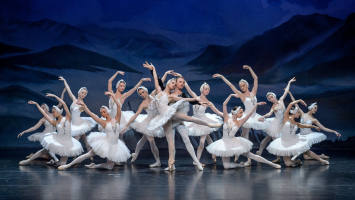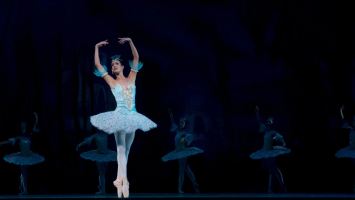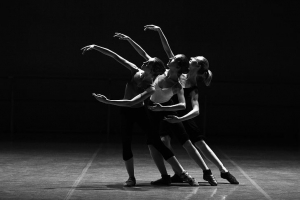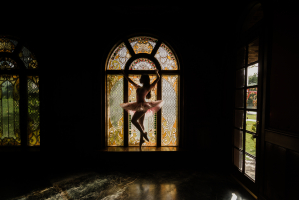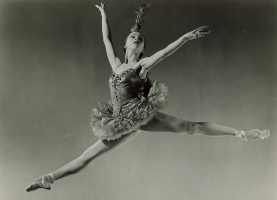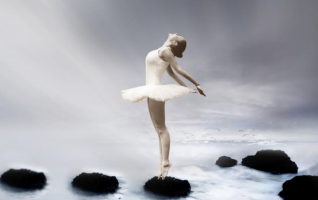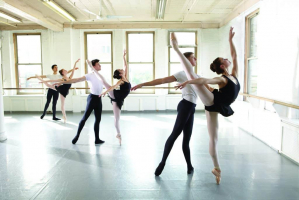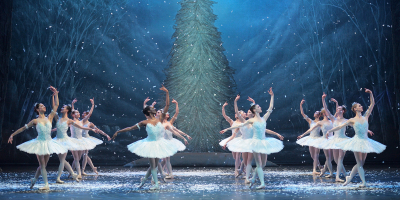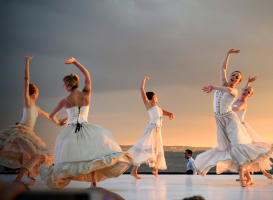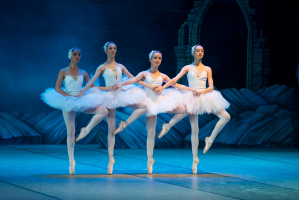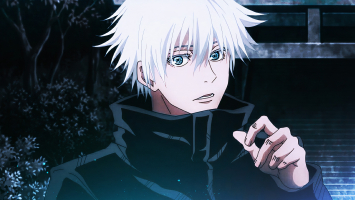Top 10 Most Famous Male Ballet Dancers
The term "ballet" conjures up images of tall, slender women in tutus; nonetheless, many males dance ballet and are as brilliant and necessary as women. And ... read more...here are some of the most famous male ballet dancers.
-
Rudolf Khametovich Nureyev was born in 1938 in the Soviet Union. He was dubbed "Lord of the Dance" by many, and he was widely regarded as the greatest and most famous male ballet dancer of his period. He was both a choreographer and a contemporary dancer. He was a flamboyant performer and captivating star who restored male ballet roles to prominence and considerably expanded the ballet audience.
Nureyev began ballet lessons at the age of 11, dropped out at the age of 15, and supported himself by dancing. At the age of 17, he enrolled in Aleksandr Pushkin's Leningrad Ballet School. He was a brilliant but disobedient student, refusing to join the Komsomol (Communist youth group), breaking curfew, and learning English secretly. He was a popular guest artist in both large and small businesses around the world.
Rudolf Nureyev made significant contributions to the reconsideration of male ballet, going far beyond the "classical / modern" divisions by collaborating with contemporary choreographers. His impact on ballet is comparable to Callas' impact on opera: the way characters in opera behaved and sang was never the same again. Ballet dancers have been expected to put in a lot of effort in their jobs since Nureyev. He was one of the first notable male ballet dancers to take on leading parts in ballet, at a time when men were mostly used as backup dancers for leading ballerinas.
Born: 1938
Died: 1993
Nationality: Russian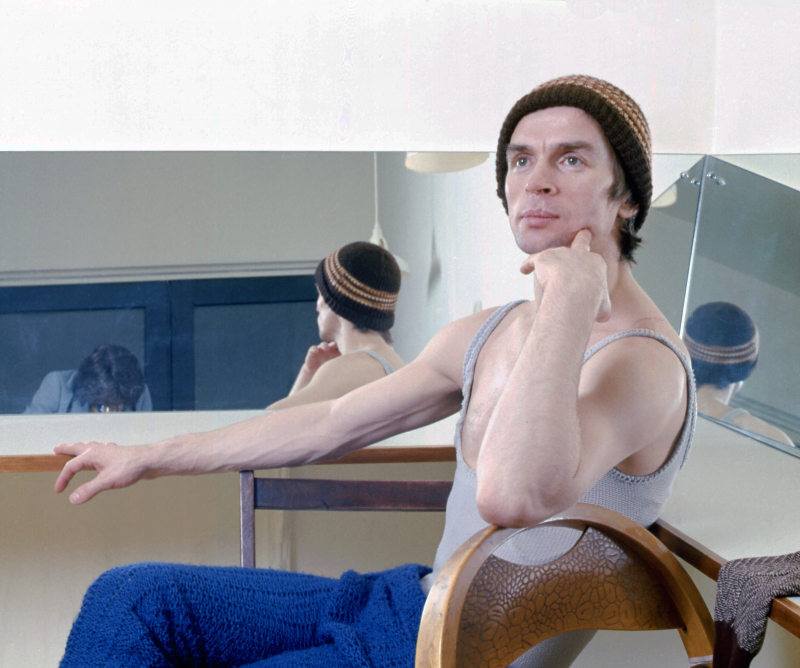
Photo on WIkimedia Commons (https://commons.wikimedia.org/wiki/File:Nureyev_66_Allan_Warren.jpg) Fan of Russian Ballet -
Mikhail Nikolayevich Baryshnikov is yet another most famous male ballet dancer. He is a dancer, choreographer, and actor, but he is most renowned as one of the finest ballerinos in ballet history. His energetic technique changed the male dancer's role in ballet, allowing dancers to be recognized as athletes as much as artists.
He began his career with the Kirov Ballet in Leningrad, but he defected and sought political asylum in Canada in 1974. He continued to dance with Canadian and American ballet groups. By 1980, Mikhail Baryshnikov had starred in a major motion picture, The Turning Point (1977), for which he was nominated for an Academy Award and a Golden Globe, had performed with some of the top dance companies in the United States, and had become artistic director of the American Ballet Theater. He was the most famous ballet dancer in the world at the time, and his lack of ego continued to endear him to the American public.
Mikhail Baryshnikov was known for his acting abilities and sex appeal, but he also had success on the big screen. Helen Mirren and Isabella Rossellini played his accomplices in crime in the 1985 musical White Nights. His acting abilities were also on display in The Turning Point (1977), which starred Shirley MacLaine and Anne Bancroft. Baryshnikov's role as Carrie Bradshaw's boyfriend Aleksandr Petrovsky in the hit series Sex and the City (2004) was widely regarded as a triumph.
Born: 1948
Nationality: Latvian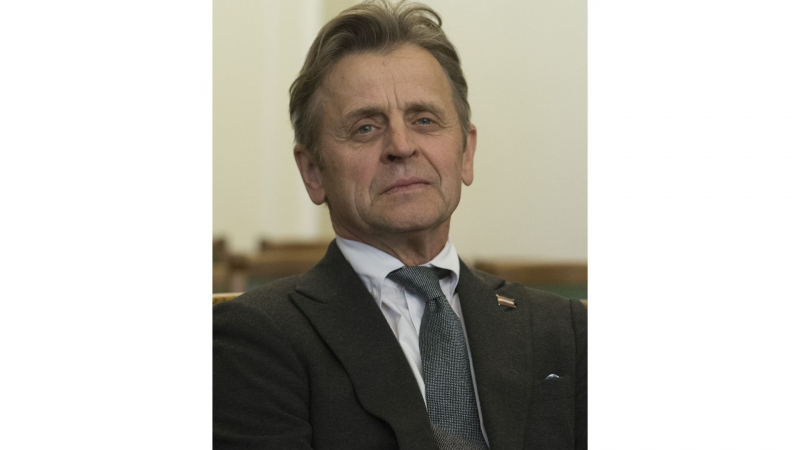
Photo on Wikimedia Commons (https://commons.wikimedia.org/wiki/File:Mikhail_Baryshnikov.jpg) regent sever -
Vaslav Nijinsky was born in Kiev, then part of the Russian Empire, in 1889. His parents were both dancers, and he spent his childhood touring with them. Nijinksy entered the Imperial Ballet School in 1900, sponsored by Enrico Cecchetti, and was followed two years later by his sister Bronia. He rapidly established himself as a superior dance student, despite his low academic performance and often rebellious behavior, and it was only his dancing abilities that kept him enrolled.
Nijinsky became noted for his remarkable virtuosity - his unrivaled jumping and twisting ability on stage. Nijinsky was known for his tremendous leaps, technical precision, beautiful movements, and sensitive depiction of emotions, as well as his radical choreographies (figure), which popularized modern dance.
The exceptionally gifted ballet dancer and choreographer rose to prominence in the 1900s, and his legacy continues to influence all kinds of art and theater today. Vaslav Nijinsky was one of the first notable male ballet dancers to be able to dance en pointe without much effort, and his dancing technique was well acclaimed.
Born: 1889
Died: 1950
Nationality: Ukrainianz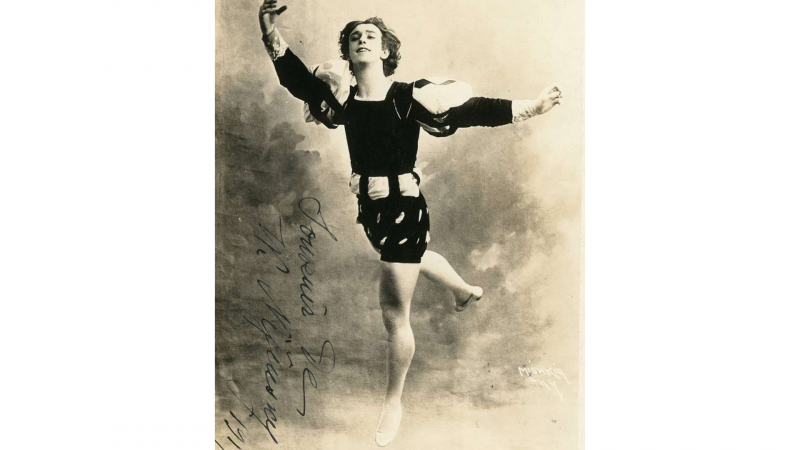
Photo on Picryl (https://picryl.com/media/waslav-nijinsky-ballet-dancer-sayre-7511-4d886a) OkarDances -
Anthony Dowell was born in London and attended the Hampshire School as well as the Lower and Upper Schools of The Royal Ballet. He joined The Royal Ballet in 1961, and less than two years later, Frederick Ashton chose him to play Oberon in The Dream. He initially danced with Antoinette Sibley, who created Titania, in this ballet, and the foundation for an excellent ballet collaboration was laid. He became director of the Royal Ballet in his mid-forties, while still dancing main roles, and kept the position for fifteen years.
Dowell rapidly became known for his ability to combine an exceptionally strong technique with lyrical beauty and restraint in his dancing. His innate theatrical sense enabled him to bring to life the heroes of full-length classical ballets such as Albrecht in Giselle and Prince Siegfried in Swan Lake, and he was equally at home in traditional or modern works. By 1966, he had advanced to the position of principal dancer.
Anthony Dowell never danced on point, but his demi-point stepping - often in piquée arabesque - became one of his trademarks. It is still recognized as such by the many male dancers who take on the roles he created. He is regarded as one of the greatest "danseurs nobles" of the twentieth century as well as one of the most famous male ballet dancers.
Born: 1943
Nationality: English
Grant Walter John Clifford -
Erik Bruhn, born on October 3, 1928 in Copenhagen, Denmark, was initially placed in a dance class because he seemed detached from people his age. He was drawn to ballet like a fish to water. He grew obsessed with the sport's accuracy and technique, dancing at Copenhagen's Royal Opera House at the age of eighteen. Though his dancing and hard work were recognized by teachers and critics alike, Bruhn was never able to shake the loneliness that had plagued him since infancy.
Through his career, he departed Denmark and traveled throughout Europe and North America, gaining a growing fan base along the way. He was known as a "dancer's dancer" and was attempting to improve men's roles in ballet. As he worked with multiple production teams, he wanted to give them more emotionally rich parts in future performances.
Despite being regarded as probably the best dancer of his generation, Bruhn was confident in and encouraging of the students who may have gone on to compete with his legacy. Despite the fact that he died in 1986, his tenure as artistic director is highly remembered. The Erik Bruhn Prize, which provides money to aspiring dancers, is one of the most visible aspects of his legacy. This was part of Erik Bruhn's bequest and continues to be an important component of the ballet industry, nurturing fresh talents even after his death.
Born: 1928
Died: 1986
Nationality: Danish
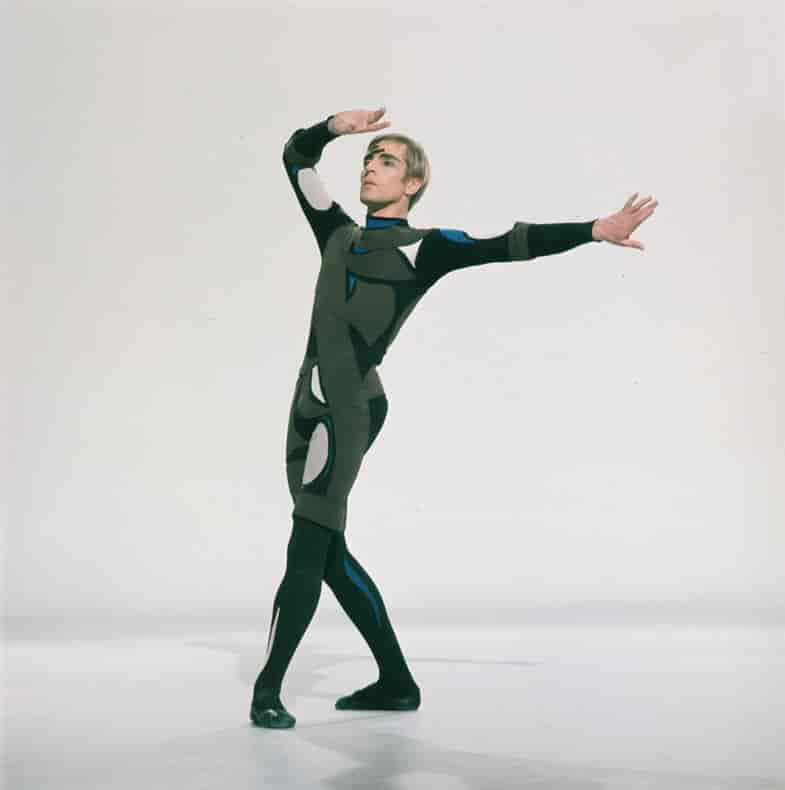
Photo on Store norske leksikon (https://snl.no/Erik_Bruhn) John Hall -
Ivan Vladimirovitch Vasiliev, born in 1989, is a Russian ballet dancer. He is already regarded as one of the world's greatest dancers as wells as one of the most famous male ballet dancers despite being only 30 years old. International guest star Ivan Vasiliev is constantly on the go, from Moscow to Milan to New York. He is a principal guest performer with the Bolshoi Ballet in addition to being a principal with the Mikhailovsky Ballet and American Ballet Theatre.
Ivan attended the Dnepropetrovsk Ballet School in Ukraine before transferring to the Belarus State Ballet School in Minsk, where he graduated in 2006. In 2006, he was invited to join the Bolshoi Ballet as a soloist, and at the age of 17, he made his debut as Basilio in Don Quixote. In 2010, he was elevated to principal dancer. He became a lead dancer with the Mikhailovsky Ballet in 2011. He has danced with the American Ballet Theatre since 2012, and he is now with the Mikhailovsky Theatre in Saint Petersburg.
At international ballet competitions in Varna, Moscow, and Perm, he has been acknowledged for his artistic prowess. Ivan Vasiliev also won the Triumph Youth Prize, the British Critics Circle National Dance Awards, and the Benois de la Danse Award. He has worked as a choreographer on a few occasions, and his future seems bright.Born: 1989
Nationality: Russian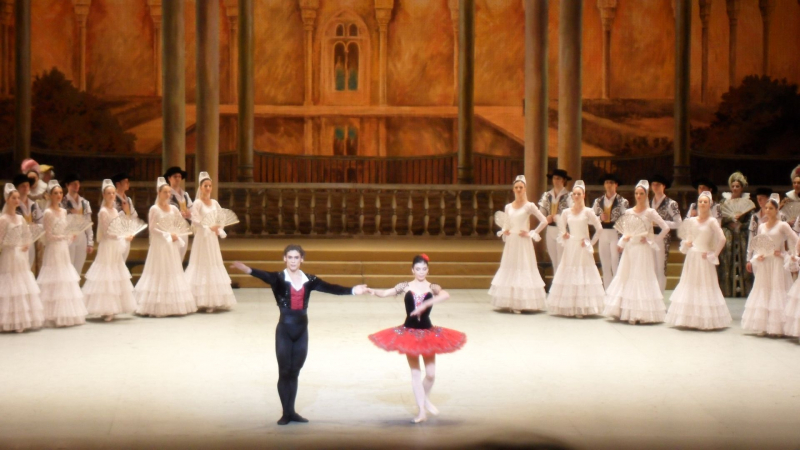
Photo on Wikimedia Commons (https://commons.wikimedia.org/wiki/File:Natalia_Ossipova_et_Ivan_Vassiliev_%28ballet_Don_Quichotte%29.JPG) Pam Boehme Simon -
Benjamin Millepied was born in the French city of Bordeaux. He began dancing with his mother, a former modern dancer, when he was eight years old. Millepied began studying ballet under Michel Rahn at the Conservatoire National in Lyon, France, when he was 13 years old. In the summer of 1992, he moved to New York to study at the School of American Ballet (SAB), the official school of New York City Ballet, and returned in the fall of 1993 on a French Ministry scholarship (Bourse Lavoisier) to study full-time.
At SAB's 1994 Spring Workshop, Millepied originated a lead role in Jerome Robbins' world premiere of 2 & 3 Part Inventions set to music by Bach. He got the Prix de Lausanne Award in 1994, the Mae L. Wien Award for Outstanding Promise in 1995, and was invited to join the corps de ballet of New York City Ballet. In the spring of 2001, Millepied was promoted to principal dancer.
Mr. Millepied has received the French government's coveted Bourse Lavoisier Scholarship, the Prix de Lausanne, the SAB's Mae. L. Wien Award for Outstanding Promise, and the United States Artists Wynn Fellow in Dance. The French Ministry of Culture bestowed the Chevalier of the Order of Arts and Letters on him in 2010. Benjamin Millepied was appointed Director of the Paris Opera Ballet in January 2013.
Born: 1977
Nationality: Italian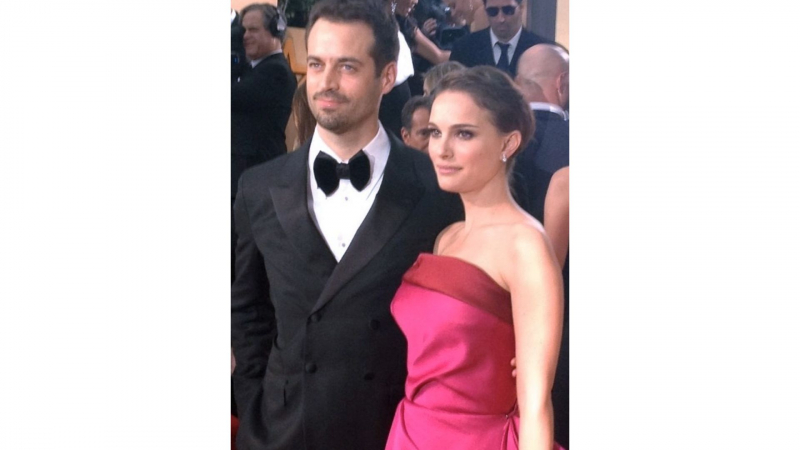
Photo on Wikimedia Commons (https://commons.wikimedia.org/wiki/File:Natalie_Portman_-_Golden_Globes_2012_%28cropped_2%29.jpg) Simon Nesh -
Next one in the list of the most famous male ballet dancers is Carlos Acosta. Carlos Yunior Acosta Quesada is a Cuban ballet dancer born in 1973 in Havana. He was the youngest of 11 children, and his father chose to put him in a state-funded dance studio to keep him out of trouble. This is where he developed his interest in ballet. At the age of eight, he was invited to join the English National Ballet as their youngest major dancer, and he quickly rose through the ranks, performing all of the leading parts.
Throughout his ballet career, Carlos created numerous award-winning productions, including 'Tocororo' and 'Carlos Acosta and Friends of the Royal Ballet'. He also choreographed the Royal Ballet productions of Don Quixote and Carmen, as well as the most recent West End production of Guys and Dolls. Carlos' outstanding contribution to dance continues to this day, and he was granted a CBE in the Queen's New Year's Honours List in 2014.
His athleticism, sheer love of dancing, and incredible ability to portray emotion inspired a generation of dancers all around the world. His moving story and the challenges he has faced speak for itself. He has been compared to Mikhail Baryshnikov and Rudolf Nureyev, and is widely considered to be the best male dancer of his generation. Carlos Acosta retired from classical dancing in 2016 after 28 years of performing in roles ranging from Spartacus to Romeo.
Born: 1973
Nationality: Cuban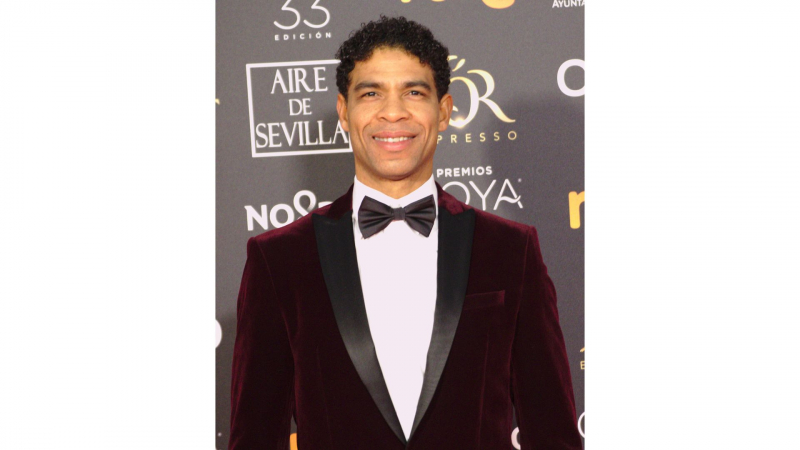
Photo on Wikimedia Commons (https://commons.wikimedia.org/wiki/File:Premios_Goya_2019_-_Carlos_Acosta.jpg) Royal Opera House -
Michael Smuin was a ballet dancer, choreographer, and theatrical director from the United States. He was born in Missoula, Montana in 1938. He was recognized by the director of the San Francisco Ballet when he was 14 and qualified to study dancing at the University of Utah. He began dancing with that company at the age of 15 in 1953 and quickly rose through the ranks to become a principal.
Smuin was co-artistic director of the San Francisco Ballet from 1973 to 1985. He danced with that company from 1953 to 1961, and then with the American Ballet Theatre, where he was both a main dancer and a choreographer. He began his career with the San Francisco Ballet as a ballet prodigy. After choreographing and dancing for American Ballet Theater in New York, he returned to the San Francisco Ballet as co-artistic director. With only 12 to 15 dancers and a concentration on new works, Smuin Ballet, which he founded in 1994, wanted to be lean and innovative.
Michael Smuin's ability to interact with audiences sets him apart as a master of the delicate points of classical ballet. His inclusion of aspects from contemporary culture, such as break-dancing, split critics but drew in many unfamiliar with ballet.
Born: 1938
Died: 2007
Nationality: American6thFloorControl smuinballet -
Talking about the most famous male ballet dancers, Roberto Bolle is not to be missed. Roberto Bolle was born in Milan and attended the Theatre La Scala Ballet School, where he was chosen by Rudolf Nureyev to dance Tadzio in Death in Venice. He was elevated to lead dancer in 1996, two years after joining La Scala Ballet. Among his many roles are The Sleeping Beauty, Cinderella, Don Quixote (Nureyev), Swan Lake, The Nutcracker, La Bayadère (Makarova), Études, Giselle (Guillem), Le Spectre de la Rose, La Sylphide, Manon, Romeo and Juliet, Onegin, The Merry Widow, and Apollon Musagète.
Bolle has been a Resident Guest Artist at La Scala Theatre since December 1998. In 2000, he premiered Anthony Dowell's Swan Lake at Covent Garden, and he appeared at the Bolshoi Theatre to commemorate Maya Plisetskaya's 75th birthday. In commemoration of H. M. Queen Elizabeth II's Golden Jubilee, he danced at Buckingham Palace in 2002.
Roberto Bolle is the American Ballet Theatre's primary dancer and a guest performer with the world's greatest ballet companies. He has also served as a UNICEF Goodwill Ambassador since 1999, and he has appeared in numerous fashion and style magazines as well as advertising campaigns. He is the most well-known Italian dancer of all time. A statuesque body, exceptional technical proficiency, and unwavering devotion to classical ballet.
Born: 1975
Nationality: Italian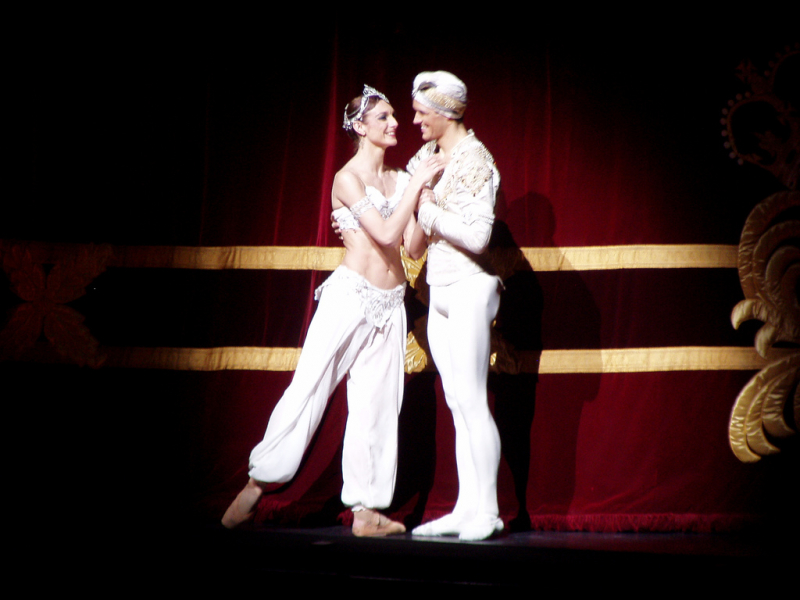
Photo on Wikimedia Commons (https://commons.wikimedia.org/wiki/File:Zenaida_Yanowsky_and_Roberto_Bolle_La_Bayadere.jpg) Dancersdiary












